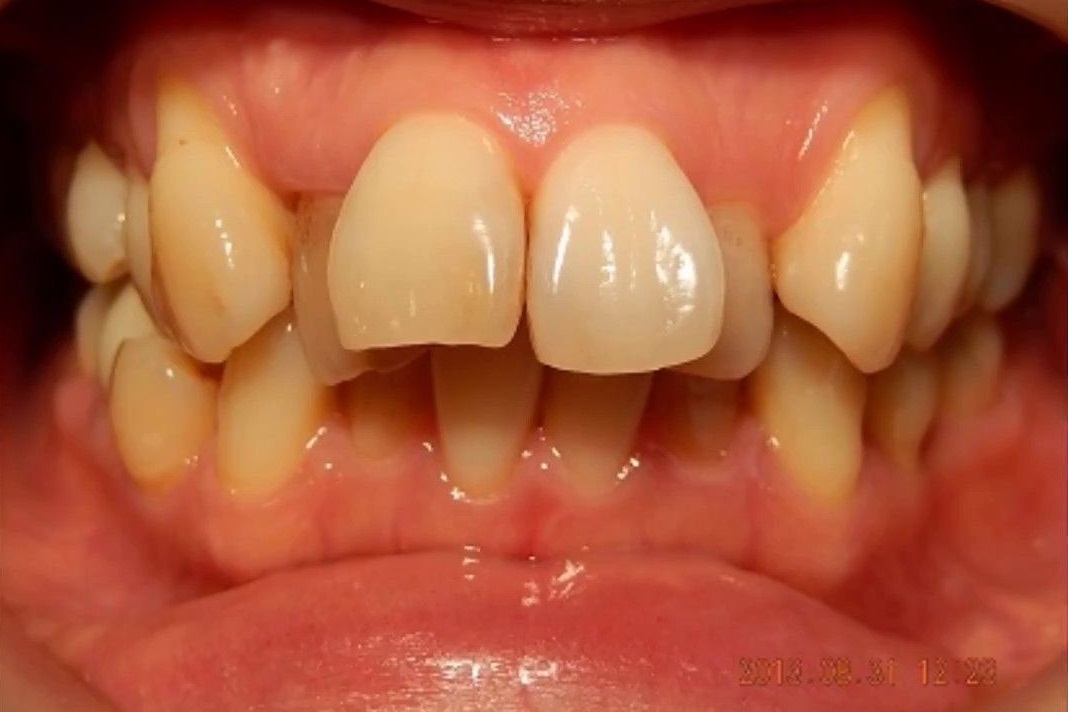Ideally, teeth should fit perfectly in your mouth without any spacing or overlapping. The perfect alignment of teeth is called occlusion, and the opposite of it– misalignment of teeth is called malocclusion in orthodontic parlance. Unfortunately, there are millions in the world suffering from crowding or spacing issues. Deviation from the perfect alignment varies from person-to-person and depending on the severity of misalignment, it could cause oral health complications like teeth crowding, crossbite, overbite, under or open bite. Thankfully, you can correct teeth misalignment using suitable orthodontic braces treatment and have a life-long perfect smile.

What Causes Dental Crowding?
The evolutionary progression of humans from eating raw and hard food to cooked and softer food led to a reduction in the jaw bone. In fact, the change in anatomy made the third molar or wisdom tooth redundant, and in the struggle to find space on the jaw bone. So, misalignment or simply crowding of teeth comes from inheritance. Apart from genetic influence, there are factors like prolonged use of pacifier, feeding bottle, and thumb-sucking could cause teeth overlapping issues.
In some cases, fatal injuries or tumors in the jaw or mouth could cause teeth misalignment. Orthodontists are of the view that poor dental hygiene during dental treatments like filling, crowns, or braces could cause dental-overlapping issues.
What Are the Symptoms of Dental Crowding?
Depending on the complexity of your dental structure, the symptom would vary. If you are noticing any of the following symptoms, you should consult an orthodontist in time and bring your teeth back into perfect shape.
- Development of misaligned, twisted, rotated, or spacing between teeth following fall of baby teeth.
- Change in facial appearance with age
- Biting of the inner cheeks or tongue
- Problem in having a perfect bite and chewing
- Problem in speaking, including lisping
- In some extreme cases mouth breathing
What Challenges Dental Crowding Could Cause?
Crooked or misaligned teeth, no doubts, affects your appearance and thereby the confidence and freedom to smile. You become hyper self-conscious and ultimately start avoiding smiling in public. Aesthetics and behavioral psychology apart, teeth misalignment could cause a series of malfunctions, discomforts, and complications. The best thing is that you can correct teeth misalignment through suitable orthodontic treatments.
If your teeth are not aligned properly on the jaw bone, then crowding or spacing makes it extremely difficult to maintain oral hygiene. Discomfort in regular brushing and flossing could cause problems like;
- Caries (dental decay)
- Gingivitis (Gum related ailments)
- Periodontitis (Gum disease)
Overlapping of teeth could cause a misalignment in the dental arch, which could lead to problems in chewing, and in some cases headache and back pain.
Does It Require Teeth Removal to Correct Overlapping?
In the early days, people used to extract one or more teeth to create enough space to solve the teeth overlapping or crowding issues. The extra space used to correct the overlapping challenge, but it wasn’t a very effective treatment.
As the medical science progressed and advanced treatment and instruments evolved, a separate branch evolved to correct jaw bone and teeth alignment related misalignment using suitable treatments and devices. Depending on the complexity of dental structure, an orthodontist will use either of these two orthodontic appliances to bring your misaligned teeth to the right position:
- Mobile or Fixed Orthodontic Appliance
- Orthodontic Palatal Appliance
Whether your orthodontic appliance is fixed or removable, the core treatment principle is the same gradual application of the pressure to shift teeth in a specified direction. The traction method is used for bringing your crooked teeth in the right position and correct overlapping, spacing, or bite-related issues.
In the case of the palatal appliance, a device is placed under the tongue to increase palatial space by up to 3 mm. Since it remains invisible, it is considered a relatively more aesthetic treatment procedure. This orthodontic treatment is more suitable for children in growing age to get effective results without much discomfort.
If you are noticing the development of misaligned teeth in your child, then you should consult an orthodontist immediately as ignoring it could cause teeth decay and gum related disease.
